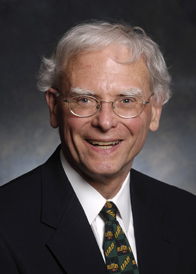Several years ago a school board in a Wisconsin school district was facing a crisis. The area was growing rapidly, and the local schools soon were going to be overcrowded. New schools were desperately needed.
 |
| Jerry Patterson |
So the school board, of which current UAB Educational Leadership Professor Jerry Patterson, Ph.D., was superintendent, went to taxpayers with a bond referendum. The citizens overwhelmingly squashed the proposal.
“The taxpayers revolted,” Patterson says. “It initially left us feeling like victims of adversity imposed by the will of the taxpayers. ‘Now what were we going to do?’ We were convinced we needed all of the new buildings we requested.”
Instead of wallowing in self-pity from rejection, Patterson asked: What will the community realistically support to help solve the problem?
Patterson and his team went back to the community and both sides concluded there was an immediate need for two elementary schools and the high school could wait. A lesser bond was approved by voters, and the elementary schools were built.
Patterson, who has been at UAB 11 years, has spent his time here researching leaders and has written three books on resilience during that time. He’s focused on identifying characteristics of a resilient leader – characteristics he believed he and his board showed in the face of a stinging defeat.
“We responded to the defeat and refused to stay stuck in a victim’s status,” Patterson says. “There was no woe-is-us attitude.”
Moving forward in the face of adversity defines a resilient leader, Patterson says. Some leaders are effective under so-called normal conditions, but their leadership is tested by chronic adversity and crisis. And, not all leaders are equally effective in tough times and normal times.
Realistic Optimism?
Patterson says leaders fall into one of four profiles amid adversity: the Unrealistic Pessimist, the Realistic Pessimist, the Realistic Optimist and the Unrealistic Optimist.
The Unrealistic Pessimist sees the glass as empty rather than half full – and they doubt that it’s even possible to put water in the glass,” Patterson says. “They don’t believe they can make a difference and typically blame others for their problems.”
The Realistic Pessimist sees the glass as half empty, focusing on problems rather than opportunities. They constantly think “if only” and make take some responsibility for the problem, but believe others share most of the blame.
The Realistic Optimist sees the glass as half full, and they are resilient. “They acknowledge the obstacles and seek out bad news, believing they can use the information to make better decisions and seize opportunities amid adversity,” Patterson says.
The Unrealistic Optimist expects the glass to be overflowing. They minimize the reality of the adversity and insist that best-case outcomes will prevail. For example, when budget cuts are imposed, these leaders expect to do as they’ve always done. Staff morale lowers because they’re pressured to do more with less.
Patterson says most resilient leaders tend to fall into category of a Realistic Optimist.
“What I’ve found about resilient leaders is summarized on a bumper sticker,” he says. “It’s not so much what you do, it’s how you think about what you do that makes all the difference.
“What separates truly resilient leaders can be traced to how they interpret the bad things that happen.”
Certainly Patterson and his team could have quit after the first referendum failed and done nothing to solve the problem. Instead Patterson believed that knowing the bad news would enable them to make better decisions on how to make a positive difference.
“Sometimes it’s not an all-or-nothing proposition,” he says. “Resilient leaders refuse to accept excuses when faced with adversity.”
Patterson’s recent UAB workshop for resilient leaders offered by the Organizational Development Department received rave reviews. He will conduct another workshop for UAB leaders Sept 12. For more information, contact Mary Floyd at 934-3359.